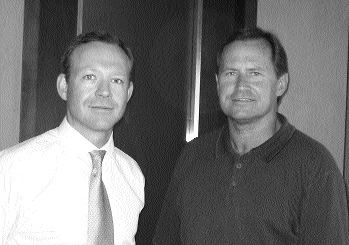It’s time to get optimistic again about mining in the Democratic Republic of the Congo. No, really; we’re serious.
It’s true, things have been very bad: from 1998 through 2002, the DRC was convulsed in a particularly brutish civil war that left some three million dead and countless more maimed, traumatized and homeless.
The neighbours weren’t always helpful during this period, oftentimes taking advantage of the anarchy to plunder the DRC’s bountiful natural resources.
The DRC’s current phase begins with the assassination in January 2001 of DRC President Laurent-Desire Kabila, whose rebel forces had earlier toppled Mobutu Sese Seko’s entrenched, kleptocratic government.
Kabila’s mild-mannered son Joseph, barely into his thirties, quickly assumed the presidency and surprised the world by both hanging onto power and seeking a peaceful resolution to the military conflicts that still wracked the country.
The pivotal moment in the DRC’s renaissance was a World Bank-sponsored peace accord signed in December 2002 in Pretoria, South Africa, between Kabila’s government and rebel factions. Under the agreement, Kabila became president of an interim government that was carefully structured and financially supported by the international community.
Currently, under Kabila, the interim government has four vice-presidents that represent different national political parties, and there is an economic and finance committee beneath those four VPs.
Most importantly, and in stark contrast to the situation under the reign of Mobutu and Kabila Sr., the international community is now providing close oversight of the DRC’s interim government. This oversight is in the form of an advisory body that includes representatives from major donor countries such as the U.S., Britain, Canada, South Africa, France, Belgium and China. (Yes, it’s the most basic kind of hand-holding to make sure the DRC government doesn’t blow its big chance at lasting peace and prosperity.)
From the perspective of Western mining companies, this interim government has made all the right economic and political moves, including implementing a strong new mining code in June 2003, with the support of the World Bank.
Financially, the international community has responded to the DRC’s plight in a big way: in 2003, the Paris Club of donor countries wrote down the DRC’s debt to US$2 billion from US$8 billion, and pledged US$3.9 billion to help the DRC during the period 2004-2006.
Last year’s accomplishments by the interim government included the creation of a unified army that integrated several rival groups and the appointment of new governors to the country’s ten provinces.
While the United Nation’s reputation is deservedly in tatters following the total mismanagement of the oil-for-food program for Iraq, the organization has been instrumental in securing peace in the DRC.
The UN Mission in the DRC, known by its French acronym MONUC, was created in late 1999, and now includes 16,000 troops and some 2,500 civilians. MONUC is the largest of the current 17 UN peacekeeping missions in the world, and is also the most expensive, with an annual budget of nearly US$1 billion.
Today, MONUC has offices in the DRC cities of Kinshasa, Kindu, Kalemie, Lubumbashi, Kananga, Mbandaka, Kisangani, Bukavu, Goma, Bunia, Matadi, Mbuji Mayi, and Beni.
The countries that are contributing troops to MONUC are: Algeria, Bangladesh, Belgium, Benin, Bolivia, Bosnia and Herzegovina, Burkina Faso, Cameroon, Canada, China, Czech Republic, Denmark, Egypt, France, Ghana, Guatemala, India, Indonesia, Ireland, Jordan, Kenya, Malawi, Malaysia, Mali, Mongolia, Morocco, Mozambique, Nepal, Niger, Nigeria, Pakistan, Paraguay, Peru, Poland, Romania, Russian Federation, Senegal, South Africa, Spain, Sri Lanka, Sweden, Switzerland, Tunisia, Ukraine, U.K., Uruguay and Zambia.
Troops are equipped with armoured personnel carriers, MI-25 combat helicopters, MI-8 transport helicopters, mortars, rocket launchers and heavy machine guns.
In May 2005, the DRC adopted a new constitution and now more than three million people have been registered to vote in a national election that most likely will be held this December — the first such election in four decades.
There’s quite a sensible structure to the elections, in that all four vice-presidents, who each now have a major portfolio, will maintain their portfolios after the vote is held. So, regardless which one of them becomes the president, the other three won’t be disenfranchised or disempowered.
The structure of the vote is giving the companies that are now making direct and fixed investments in the DRC a belief that the transition process will be followed through, and the events of 1998 won’t be repeated.
The DRC largely missed out on the mineral exploration boom in Africa over the previous two decades that so benefited the economies and people of Ghana, Guinea, Mali, Tanzania, and many others.
But hardy, risk-tolerant junior and major mining companies are starting to come back to the DRC.
Gold explorers are being lured by two of the largest, relatively undeveloped gold belts known on the African continent: the Kilo Moto belt in the northeast Orientale province; and the Twangiza-Namoya belt in South Kivu province.
While companies such as AngloGold Ashanti and Golden Star Resources have been poking around Kilo Moto, the Twangiza-Namoya belt has been locked up by Toronto-based junior Banro Corp. since 1996.
In an incredible roller-coaster ride, Banro founder Arnold Kondrat held onto his many Banro shares as they soared in early 1997, tanked as the deposit was expropriated in 1998, and slowly regained their value after the deposit was returned to the company in 2002.
Today, Banro is on a roll, with an US$18-million financing under its belt, much of Ashanti Goldfields’ Geita exploration crew on its payroll, and full access again to an eight-million-ounce gold resource that could easily be boosted above ten million ounces with some drilling.
Down in the DRC’s portion of the famed Copperbelt, there has been a flurry of activity among the base metal miners: Tenke Mining and Phelps Dodge are advancing their massive Tenke-Fungurume cobalt-copper project; Adastra Minerals (formerly American Mineral Fields) has its large Kolwezi cobalt-copper tailings deposit; and Anvil Mining and First Quantum Minerals are hauling extremely high-grade copper ore from shallow open pits.
De Beers, of course, is actively scouring the DRC for its diamond potential.
In short, we have witnessed fundamental changes in the DRC since 2002 that should, over the next five to ten years, lead to the country’s full transformation and a return to its status as one of the world’s significant mineral producers.



Be the first to comment on "Editorial: The DRC’s fresh start"